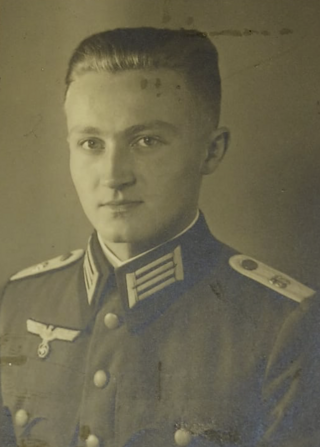Hauptmann Alfred Huth

Personalia
Born:
Died:
Profession:
Persecution:
Detention 06.04.1945 - 08.04.1945,
Murdered on 08.04.1945
Honors:
Iron Cross I. Class
Iron Cross II Class
Assault Badge
Memberships
Curriculum Vitae
Alfred Huth was born in Vienna as the legitimate son of retired lieutenant colonel Alfred Huth and Anna, née Weiß. His father became the director of a company in Budapest, which is why Alfred Huth attended the German-language grammar school in Budapest after elementary school, where he graduated in 1936.
On September 1, 1936, he enlisted in the Austrian army as a one-year volunteer and was subsequently accepted into the army. At the beginning of October 1937, Alfred Huth was transferred to the Theresian Military Academy in Wiener Neustadt. There he witnessed the downfall of a free and independent Austria when the German Wehrmacht invaded Austria on March 12, 1938.
On June 1, 1938, Alfred Huth was promoted to ensign and on January 1, 1939 to lieutenant. As a member of the staff of the 227th Infantry Division, he was first stationed in Germany before being deployed on the Western Front. He was then stationed in the Le Havre area. From June 22, 1941, he took part in the Russian campaign and was injured on October 2, 1941. After his recovery, he was transferred to the Army District Command XVIII in Vienna on January 1, 1942.
He was on the same staff as his fiancée Charlotte Rohrer, whom he married in a church ceremony on July 22, 1942, but not in a civil ceremony. They have a foster child together. At the beginning of 1943, the member of the military resistance Carl Szokoll was transferred to the staff and Charlotte Huth became his secretary.
On February 1, 1943, Alfred Huth was promoted to captain. The resistance fighter Major Carl Szokoll is the organizer of the 'Operation Valkyrie' in Vienna in 1944, but remains unrecognized and continues to be involved in the resistance. Alfred Huth, a staunch Austrian, and his wife Charlotte Huth also began to get involved in the resistance for a free Austria.
In the spring of 1945, Major Carl Szokoll and his colleagues planned the 'Operation Radetzky'. The aim was to support the Red Army in the liberation of Vienna and thus prevent major destruction. Major Karl Biedermann, also a member of 'Operation Radetzky', is to be sent with his troops, which also include Captain Alfred Huth and First Lieutenant Rudolf Raschke were to occupy key positions in the city and prevent bridges from being blown up.
However, the 'Operation Radetzky' planned for April 6, 1945 was betrayed. Captain Alfred Huth was arrested on April 6, 1945 in the building of the Vienna Wehrkreiskommando XVII at Universitätsstraße 7, but was acquitted together with Rudolf Raschke at the subsequent stand trial against Karl Biedermann. However, on the instructions of Reichsverteidigungskommissar Generaloberst der Waffen-SS Sepp Dietrich, Rudolf Raschke and Alfred Huth were brought before an SS and police court and sentenced to death on April 8, 1945.
On the same day, he was publicly hanged with Major Karl Biedermann and First Lieutenant Rudolf Raschke at Floridsdorfer Spitz in Vienna. The Vienna Chief of the Security Police and SD Rudolf Mildner personally took command at the place of execution. The Viennese Gestapo officer and SS-Obersturmführer Franz Kleedorfer carried out the execution.
Together with the two other murdered resistance fighters, Major Karl Biedermann and First Lieutenant Rudolf Raschke, he was laid to rest in a grave of honor in the Hietzing cemetery.
His wife Charlotte Huth survived the National Socialist terror regime and became involved in the ÖVP-Kameradschaft der politisch Verfolgten und Bekenner für Österreich after the liberation of Austria.
Places
Residence:
Memorial:
Honoring:
Citations
Österreichisches Staatsarchiv (ÖStA)
Wiener Stadt- und Landesarchiv (WStLA)
Dokumentationsarchiv des österreichischen Widerstands (DÖW)
Wikipedia unter de.wikipedia.org/wiki/227._Infanterie-Division_(Wehrmacht)
